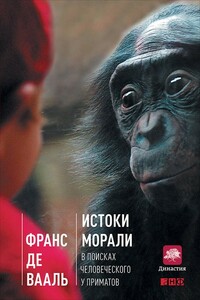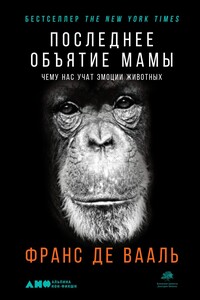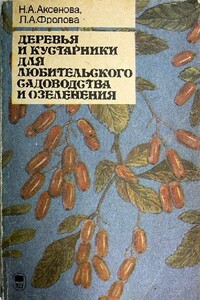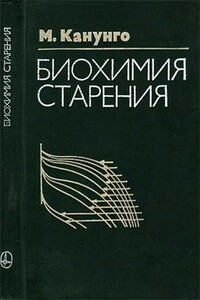Достаточно ли мы умны, чтобы судить об уме животных? - страница 143
Neisser, U. 1967. Cognitive Psychology. Englewood Cliffs, NJ: Prentice-Hall.
Nielsen, R., et al. 2005. A scan for positively selected genes in the genomes of humans and chimpanzees. Plos Biology 3:976–85.
Nishida, T. 1983. Alpha status and agonistic alliances in wild chimpanzees. Primates 24:318–36.
Nishida, T., et al. 1992. Meat-sharing as a coalition strategy by an alpha male chimpanzee? In Topics of Primatology, ed. T. Nishida, 159–74. Tokyo: Tokyo Press.
Nishida, T., and K. Hosaka. 1996. Coalition strategies among adult male chimpanzees of the Mahale Mountains, Tanzania. In Great Ape Societies ed. W. C. McGrew, L. F. Marchant, and T. Nishida, 114–34. Cambridge: Cambridge University Press.
O'Connell, C. 2015. Elephant Don: The Politics of a Pachyderm Posse. Chicago: University of Chicago Press.
Ostoji´c, L., R. C. Shaw, L. G. Cheke, and N. S. Clayton. 2013. Evidence suggesting that desire-state attribution may govern food sharing in Eurasian jays. Proceedings of the National Academy of Sciences USA 110: 4123–28.
Osvath, M. 2009. Spontaneous planning for stone throwing by a male chimpanzee. Current Biology 19: R191–92.
Osvath, M., and G. Martin-Ordas. 2014. The future of future-oriented cognition in non-humans: Theory and the empirical case of the great apes. Philosophical Transactions of the Royal Society B 369:20130486.
Osvath, M., and H. Osvath. 2008. Chimpanzee (Pan troglodytes) and orangutan (Pongo abelii) forethought: Self-control and pre-experience in the face of future tool use. Animal Cognition 11:661–74.
Ottoni, E. B., and M. Mannu. 2001. Semifree-ranging tufted capuchins (Cebus apella) spontaneously use tools to crack open nuts. International Journal of Primatology 22:347–58.
Overduin-de Vries, A. M., B. M. Spruijt, and E. H. M. Sterck. 2013. Long-tailed macaques (Macaca fascicularis) understand what conspecifics can see in a competitive situation. Animal Cognition 17:77–84.
Parr, L., and F. B. M. de Waal. 1999. Visual kin recognition in chimpanzees. Nature 399:647–48.
Parvizi, J. 2009. Corticocentric myopia: Old bias in new cognitive sciences. Trends in Cognitive Sciences 13:354–59.
Paxton, R., et al. 2010. Rhesus monkeys rapidly learn to select dominant individuals in videos of artificial social interactions between unfamiliar conspecifics. Journal of Comparative Psychology 124:395–401.
Pearce, J. M. 2008. Animal Learning and Cognition: An Introduction, 3rd ed. East Sussex, UK: Psychology Press.
Penn, D. C., and D. J. Povinelli. 2007. On the lack of evidence that non-human animals possess anything remotely resembling a "theory of mind." Philosophical Transactions of the Royal Society B 362:731–44.
Pepperberg, I. M. 1999. The Alex Studies: Cognitive and Communicative Abilities of Grey Parrots. Cambridge, MA: Harvard University Press.
–. 2008. Alex and Me. New York: Collins.
–. 2012. Further evidence for addition and numerical competence by a grey parrot (Psittacus erithacus). Animal Cognition 15:711–17.
Perdue, B. M., R. J. Snyder, Z. Zhihe, M. J. Marr, and T. L. Maple. 2011. Sex differences in spatial ability: A test of the range size hypothesis in the order Carnivora. Biology Letters 7:380–83.
Perry, S. 2008. Manipulative Monkeys: The Capuchins of Lomas Barbudal. Cambridge, MA: Harvard University Press.
–. 2009. Conformism in the food processing techniques of white-faced capuchin monkeys (Cebus capucinus). Animal Cognition 12:705–16.
Perry, S., H. Clark Barrett, and J. H. Manson. 2004. White-faced capuchin monkeys show triadic awareness in their choice of allies. Animal Behaviour 67:165–70.
Pfenning, A. R., et al. 2014. Convergent transcriptional specializations in the brains of humans and song-learning birds. Science 346:1256846.
Pfungst, O. 1911. Clever Hans (The Horse of Mr. von Osten): A Contribution to Experimental Animal and Human Psychology. New York: Henry Holt.
Plotnik, J. M., et al. 2014. Thinking with their trunks: Elephants use smell but not sound to locate food and exclude nonrewarding alternatives. Animal Behaviour







